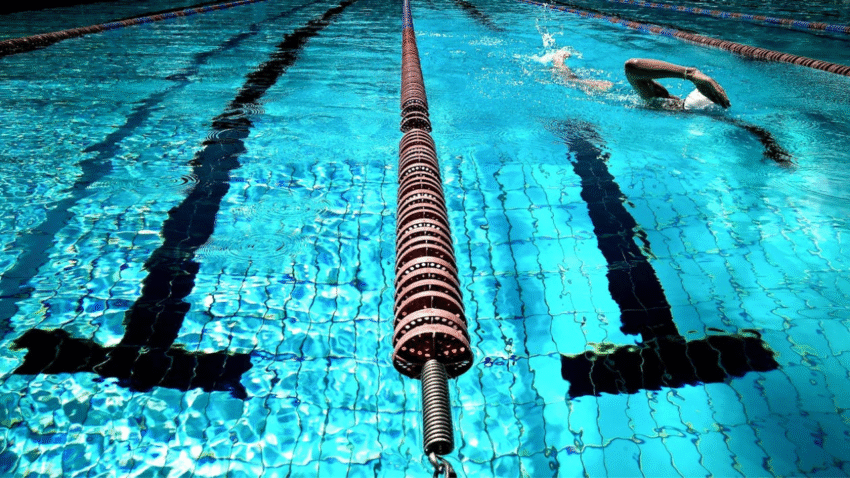Introduction
Is your pool water constantly cloudy or your pH level bouncing around? The problem may be high alkalinity. In this complete guide on how to lower pool alkalinity safely, you’ll learn exactly how to correct this issue without damaging your pool or throwing off your entire chemical balance. It’s a straightforward process once you understand the steps—and your pool will thank you for it.
Why Lowering Alkalinity Matters for Your Pool
Total alkalinity refers to the water’s ability to resist changes in pH. While it acts as a buffer, too much alkalinity can cause:
- pH “lock,” making it hard to adjust other levels
- Cloudy water
- Scaling on tiles and pool equipment
- Reduced effectiveness of chlorine
The ideal total alkalinity level for most pools is 80 to 120 parts per million (ppm). When it rises above 150 ppm, it needs to be brought down to avoid future chemical imbalances and equipment wear.
Step-by-Step Guide to Lowering Pool Alkalinity Safely
Step 1: Test Your Water
Use a pool water test kit or digital water tester to measure total alkalinity (TA). Look for readings above 120 ppm as the threshold for concern. Record your pH level at the same time since both are connected.
Pool Owner Tip: High TA often comes with high pH, so you may need to lower both simultaneously.
Step 2: Calculate Pool Volume
Before adjusting anything, determine your pool’s size in gallons:
- Rectangular Pool: Length × Width × Average Depth × 7.5 = gallons
- Round Pool: Diameter × Diameter × Average Depth × 5.9 = gallons
Knowing your volume helps you apply the right dose of acid safely and effectively.
Step 3: Choose the Right Acid
To lower alkalinity, use one of the following:
- Muriatic Acid (Hydrochloric Acid): Strong and fast-acting; most commonly used.
- Dry Acid (Sodium Bisulfate): Milder alternative; easier to store and handle.
Both products will lower total alkalinity and pH, so careful control is essential.
Caution: Always wear protective gloves and eyewear when handling pool acids.
Step 4: Turn Off the Pool Pump
This is a critical safety step. With the pump off, the acid will sink and stay in the area it’s added to—targeting the alkalinity more effectively without disturbing the entire pool balance too quickly.
Step 5: Add the Acid Slowly to One Spot
Pour the acid into the deep end of the pool in a focused stream. Do not broadcast it around the pool. This method, called “slugging,” allows the acid to lower TA with minimal impact on pH.
How Much to Add?
As a general guide:
- 1 quart of muriatic acid lowers TA by 10 ppm in a 10,000-gallon pool.
Always refer to the instructions on the product label and err on the side of caution. It’s safer to make small adjustments and retest than to overcorrect.
Step 6: Let the Acid Sit for 1 Hour
Keep the pump off for about an hour to allow the acid to target the water directly around it. This helps focus its effect on total alkalinity more than pH.
Step 7: Turn the Pump Back On and Circulate
After the rest period, turn your pool pump back on and run it for 6 to 8 hours to mix the water fully. This helps equalize the chemical levels throughout the pool.
Step 8: Retest and Repeat If Needed
After a full circulation cycle, retest the water. If total alkalinity is still above 120 ppm, repeat the process the next day using a slightly smaller acid dose if needed.
Important Note: pH may temporarily dip after acid treatment but will typically rise again over 24–48 hours as the pool rebalances.
Common Mistakes to Avoid
- Adding Too Much Acid at Once
This can crash your pH and make the water corrosive. Always adjust in stages. - Skipping the Circulation Step
Letting acid sit too long without mixing it in can lead to staining or surface damage. - Using the Wrong Product
Never use household vinegar or other non-pool acids—they’re ineffective and can introduce contaminants. - Not Testing Total Alkalinity AND pH Together
Because they’re interlinked, both values must be monitored after adjustments. - Overcorrecting Based on pH Alone
Don’t try to fix alkalinity based solely on pH readings. Use a full water test for accuracy.
Extra Tips & Pool Hacks
- Use Aeration to Raise pH Back Up (If Needed): If pH drops too low after lowering alkalinity, turn on a water fountain, aerator, or spa jets. This increases pH without affecting TA.
- Add Acid in the Morning: This gives the pool all day to circulate and balance, especially if you’re using solar heating or cover systems.
- Weekly Testing = Long-Term Balance: Keeping TA in check prevents future chemical swings and helps all other pool chemicals work more effectively.
Need to rebalance your pH afterward? Read our guide on [how to balance pH levels in your pool].
Conclusion
Learning how to lower pool alkalinity safely is an essential skill for any pool owner who wants clean, clear, and trouble-free water. With the right tools, careful dosing, and a bit of patience, you can restore proper chemical balance and prevent bigger problems down the line.
✅ Bookmark this guide and include alkalinity testing in your weekly pool care routine!
